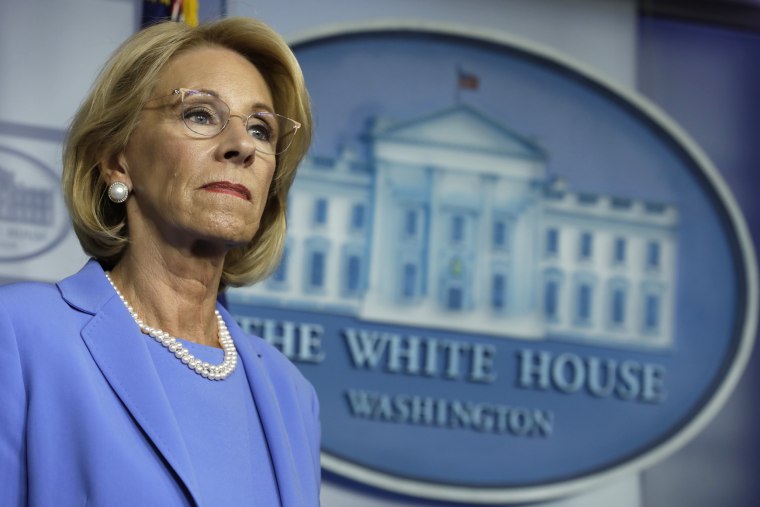WASHINGTON — Colleges and universities across the United States are still waiting for most of the $6.3 billion set aside by Congress to help students struggling to pay for food, housing and child care during the coronavirus pandemic.
And a decision by Secretary of Education Betsy DeVos this week to prohibit “Dreamers” and most other foreign nationals from accessing the funds has heightened concerns about the welfare of some of the most economically vulnerable students, university officials said.
Nearly a month after President Donald Trump signed the economic relief package into law, just 1 in 10 schools that applied for funds for their students have been approved, figures provided by the Education Department show.
As of Wednesday, only $750 million of the $6.4 billion had been awarded, although the department said that number was growing quickly.
“We have not seen any of the money yet,” said Janine Davidson, president of the Metropolitan State University of Denver, whose student body relies heavily on federal aid. "We did what we're supposed to do. And we put the application in immediately.”
Colleges waited nearly a month for answers from the Education Department to questions about who exactly was eligible and how the dollars could be spent, a key factor that has slowed down the application and approval process, according to interviews with university officials. Although the program was technically up and running, school officials said many institutions were concerned about getting penalized for misusing the money if they proceeded before fully understanding the rules.
This week, the answer came: Only students eligible for federal aid. That excludes potentially hundreds of thousands of the “Dreamers,” beneficiaries of the Deferred Action for Childhood Arrivals program, known as DACA. The Obama-era program shielded from deportation and allowed work visas for immigrants brought to the U.S. as children.
Dreamers are ineligible for federal student aid.
Chancellor Kim Wilcox of the University of California-Riverside said schools across the U.S. are working to provide support, including medical services and counseling, to students even with on-campus classes being canceled. Still, he said, the need for direct help to students for room and board and other basic necessities was “dire.”
“There is an urgency to this and the longer this goes on, the costs mount up, and then it's much more difficult for students to manage,” he said.
The Coronavirus Aid, Relief and Economic Security Act, passed by Congress last month amid the worsening pandemic, gave colleges and universities wide latitude to decide how best to dole out the dollars, without referencing citizenship or immigration status. But Education Department officials cited other references in the 335-page bill to federal student aid eligibility.
“The CARES Act makes clear that this taxpayer funded relief fund should be targeted to U.S. citizens, which is consistently echoed throughout the law,” Education Department spokeswoman Angela Morabito said.
The decision adds to uncertainty facing Dreamers who are already in limbo awaiting a Supreme Court decision this summer about whether to extend the DACA program, which President Donald Trump is seeking to end. Davidson, who estimated her university has hundreds of Dreamers enrolled, said that uncertainty has been exacerbated by economic uncertainty during the coronavirus for DACA students who were already disproportionately low-income.
“The anxiety level in this group is so high, yet they stay in school, and they keep going,” Davidson said. “They know that no matter what happens at the end of the day, they'll have their human capital. And so we want to do everything we can to support them.”
The $6.3 billion for direct aid to students is one half of a $12.6 billion fund created by the relief package for colleges and universities. The other half is set to go to the educational institutions themselves to help with massive financial losses resulting from the coronavirus and the closure of campuses nationwide.

